©2025 ZenABM - All Rights Reserved.
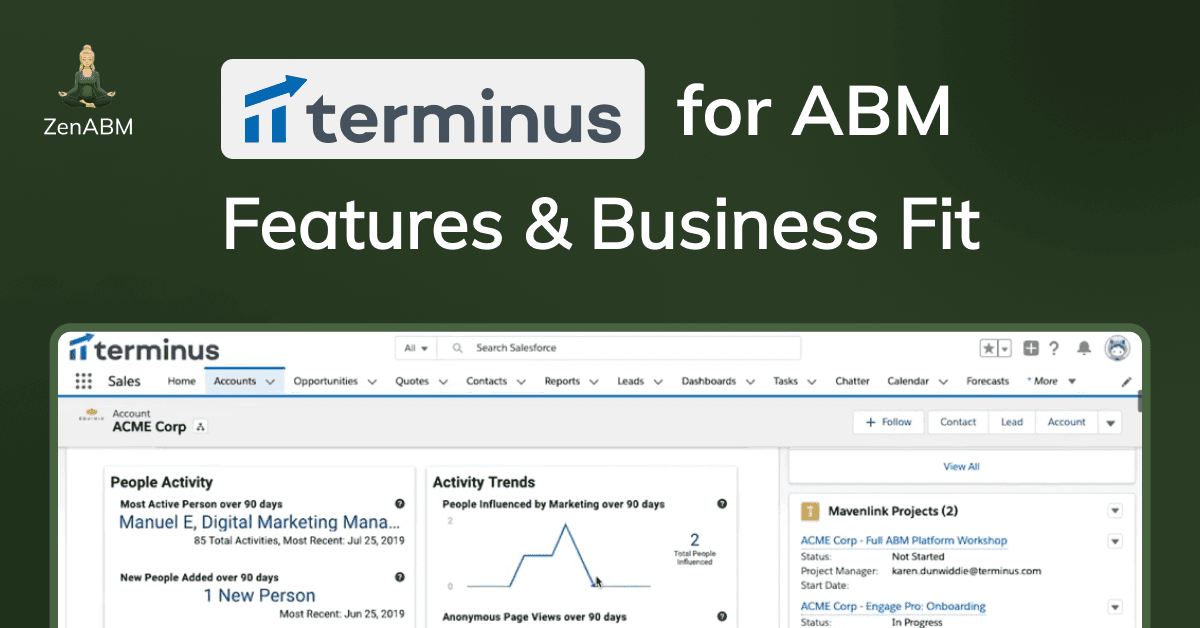
Terminus is not only an end-to-end B2B account-based marketing (ABM) platform but also offers not-so-common features like email signature tracking, chat experience tracking for ABM, etc.
But with a great suite of features comes a huge price tag and a steep learning curve.
In this article, we’ll explore all the B2B ABM features of Terminus and its reviews, and we will help you decide whether you need a tool as comprehensive as Terminus.
Let’s jump in!
Let’s look at how Terminus helps with ad campaigns:
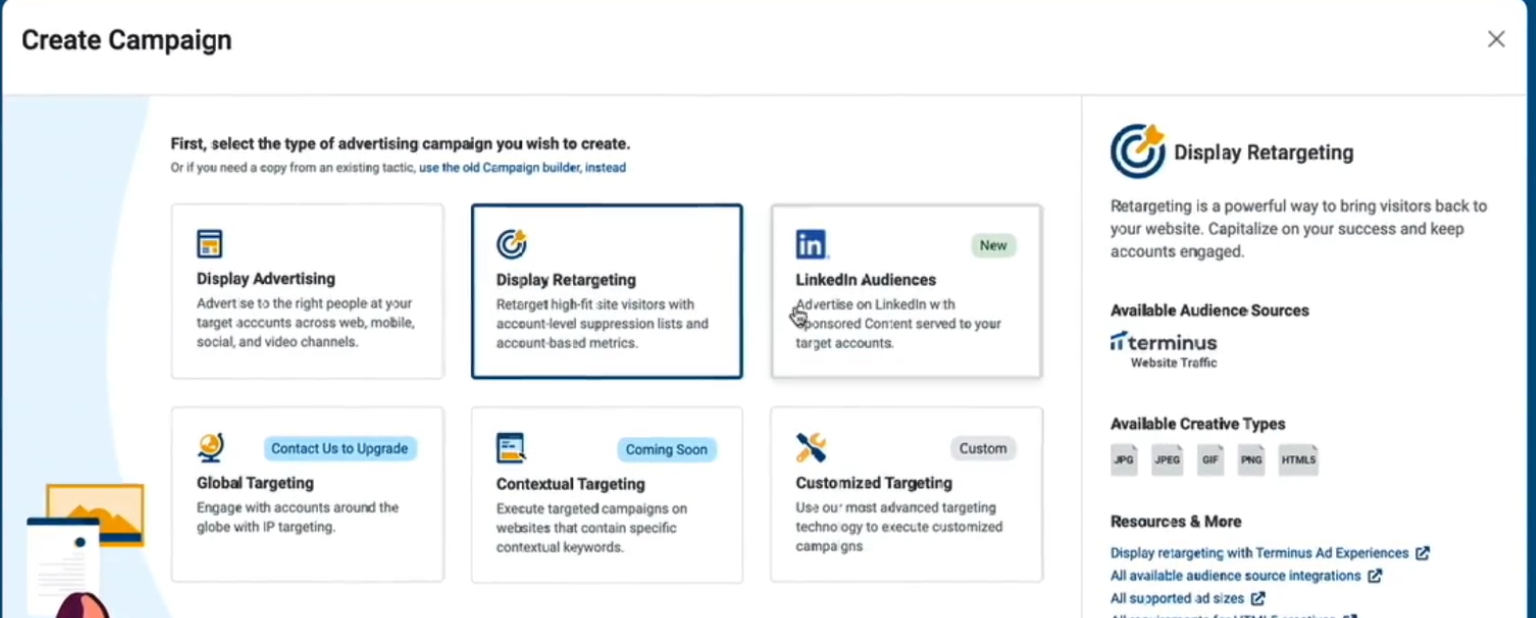
Terminus supports native management of the following types of ads:
Terminus focuses on account-level targeting. You can upload or select target account lists from your CRM or a list in Terminus (multiple filters available for precise targeting).
Within those accounts, you can further drill down to persona-based targeting (department, seniority, job function, etc.) and even exclude non-relevant job functions:
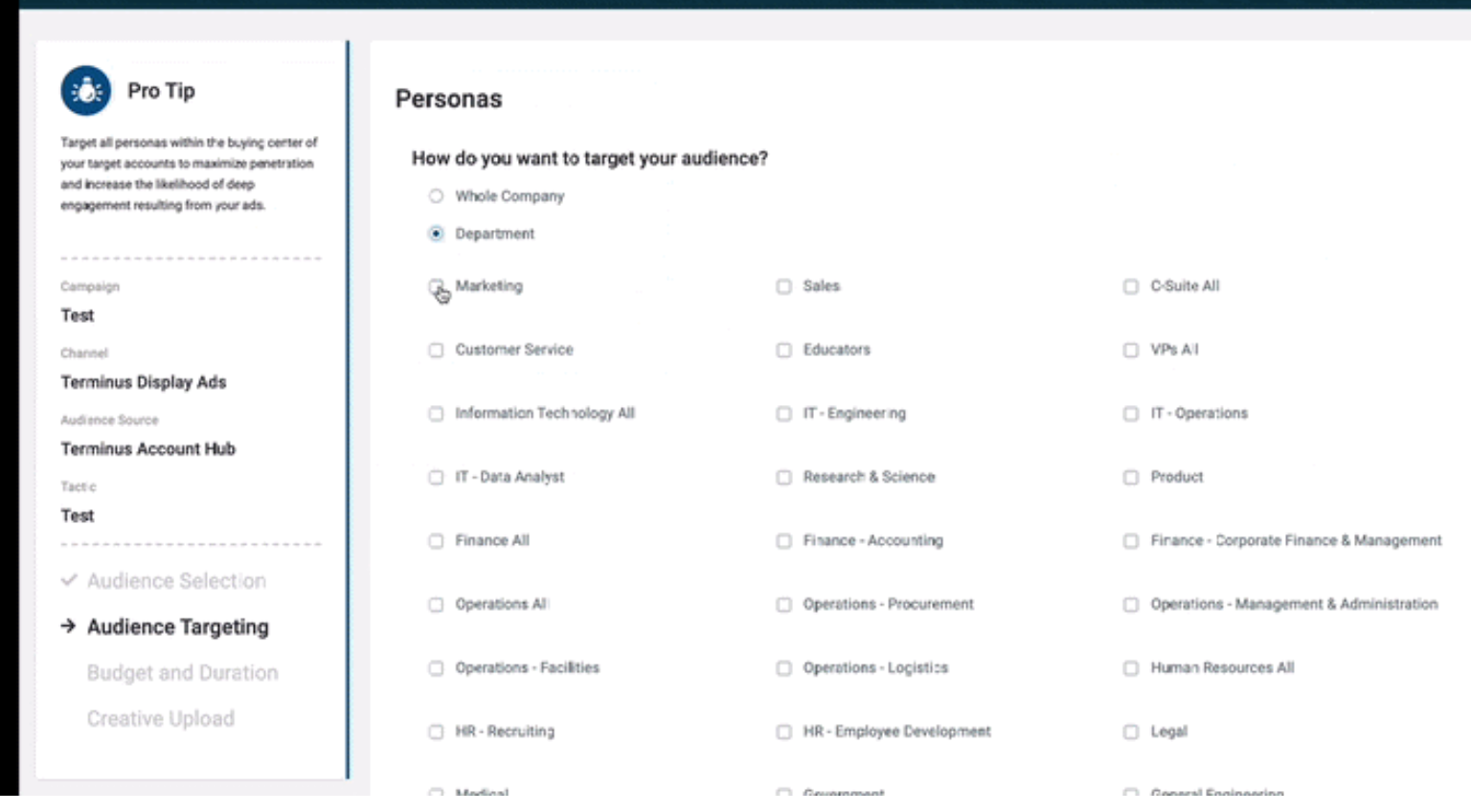
Also, Terminus utilises intent data (from partners like Bombora) to prioritise in-market accounts, ensuring ad spend is directed where interest is highest.
The platform not only tracks ad clicks and cost but also impressions, exactly what you need for ABM:
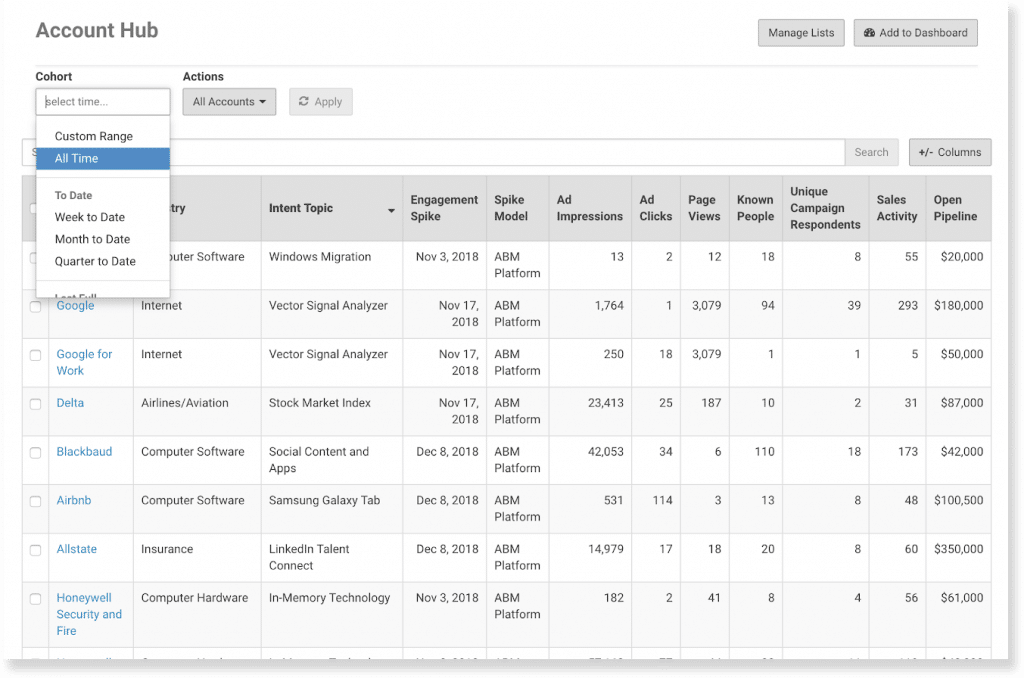
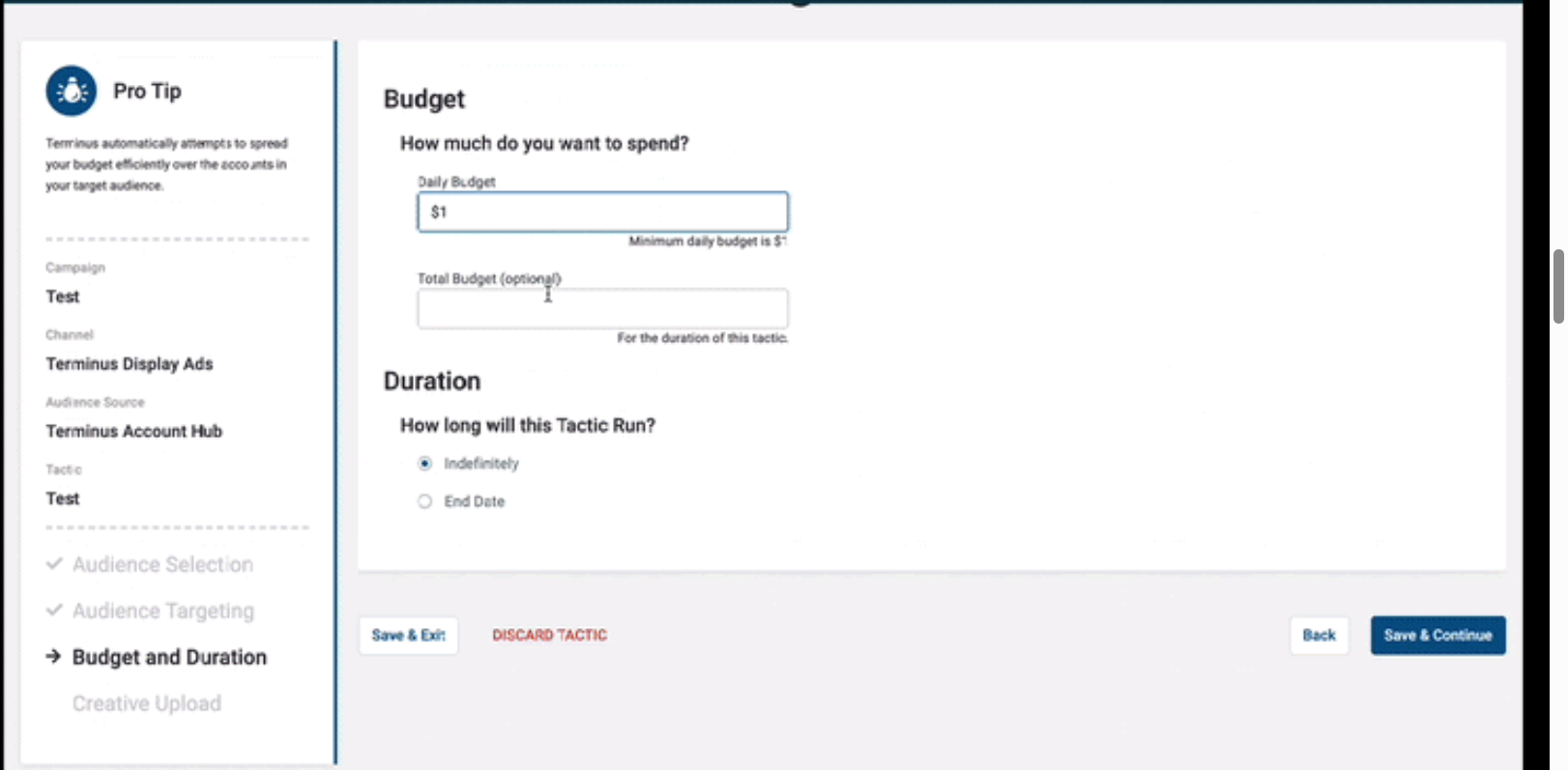
You can set the budget for your ad campaigns natively from the tool and also optimise the campaign for the best use of your resources. Terminus’s account-based DSP approach means it inherently balances impressions across your account list (so one large account doesn’t consume all your impressions).
Note: Frequency capping is not explicitly provided as a feature.
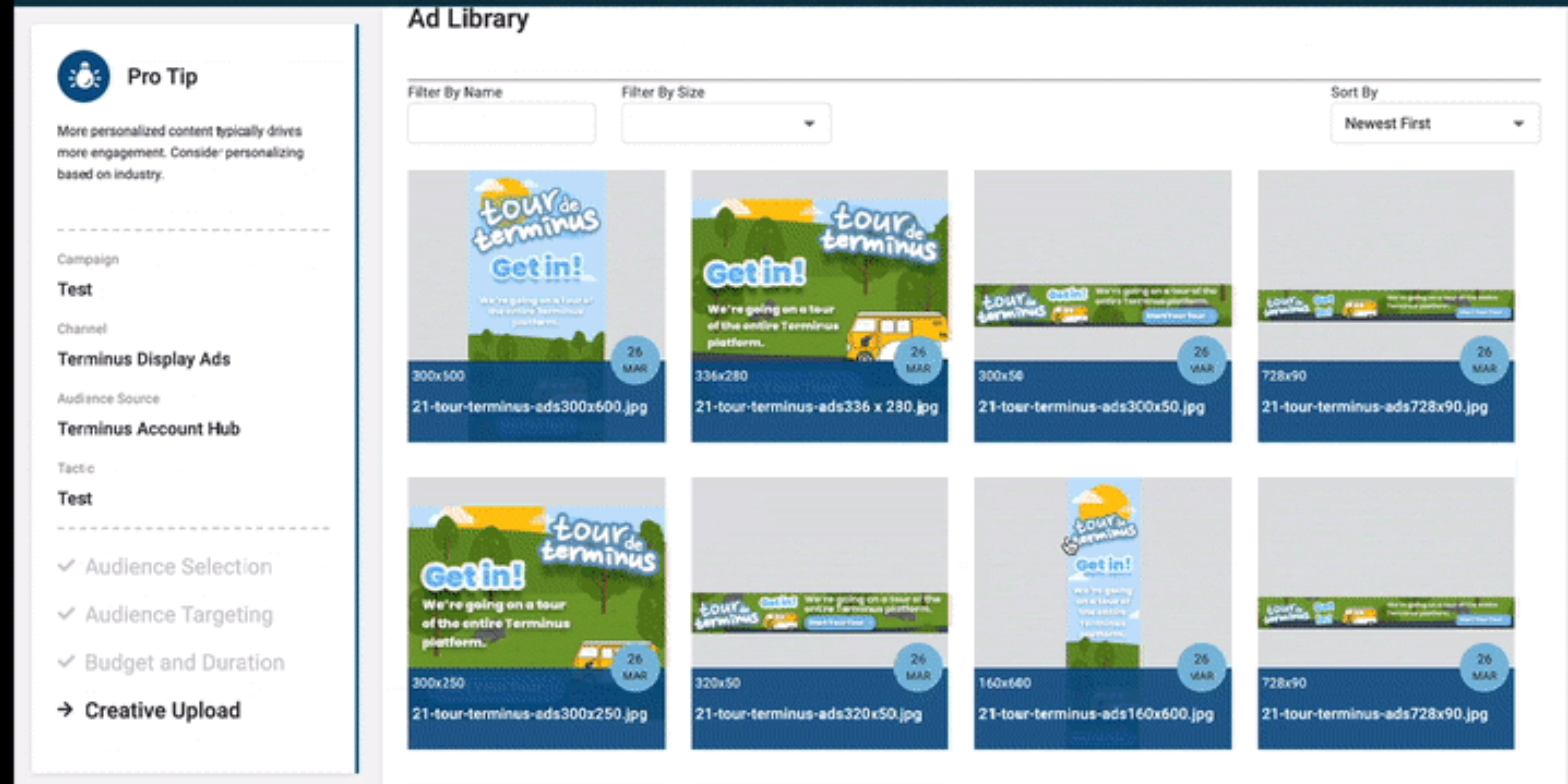
Terminus provides an ad library where you can store and manage your ad creatives.
Also, you can make ad creatives within the platform:
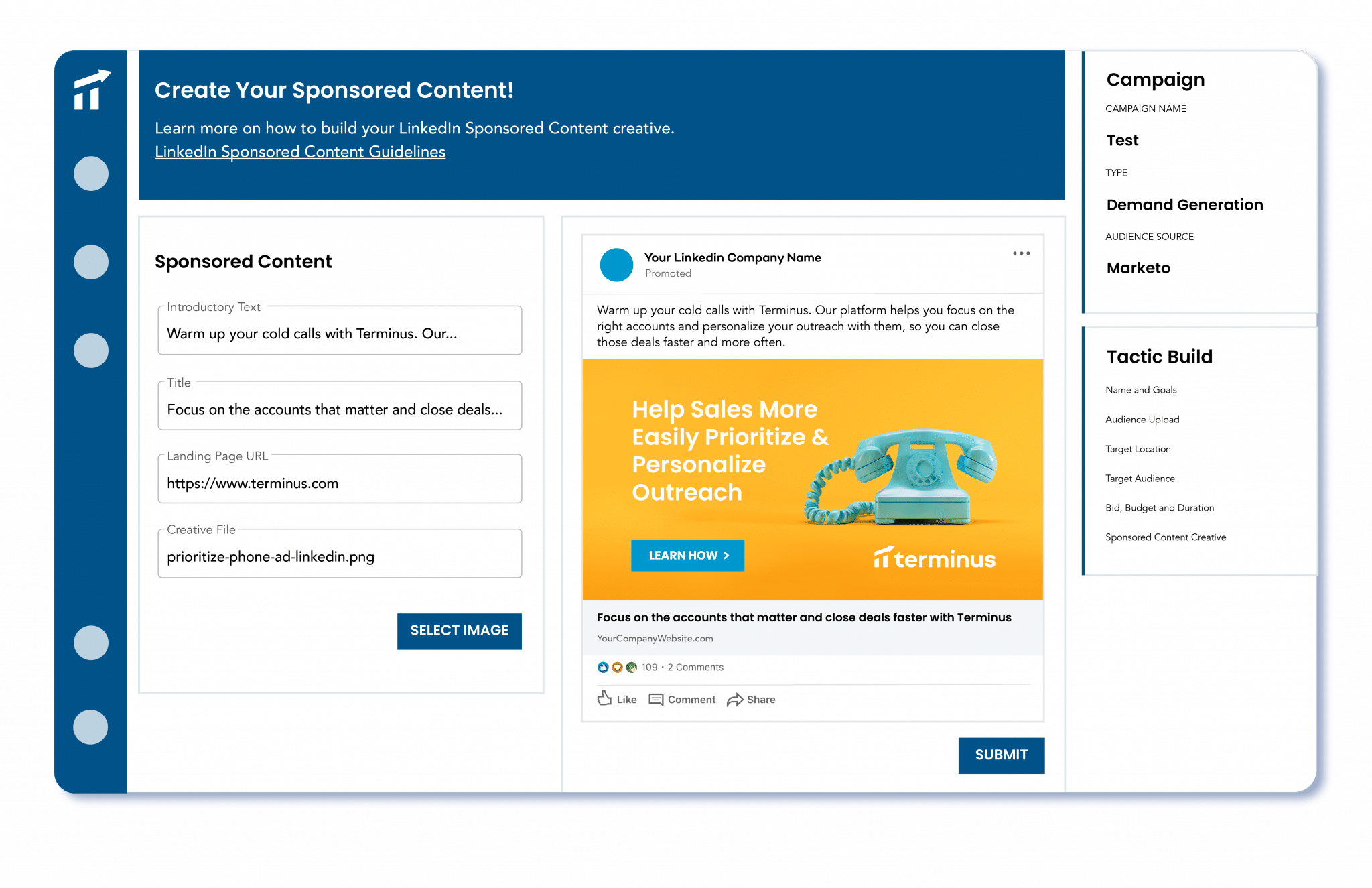
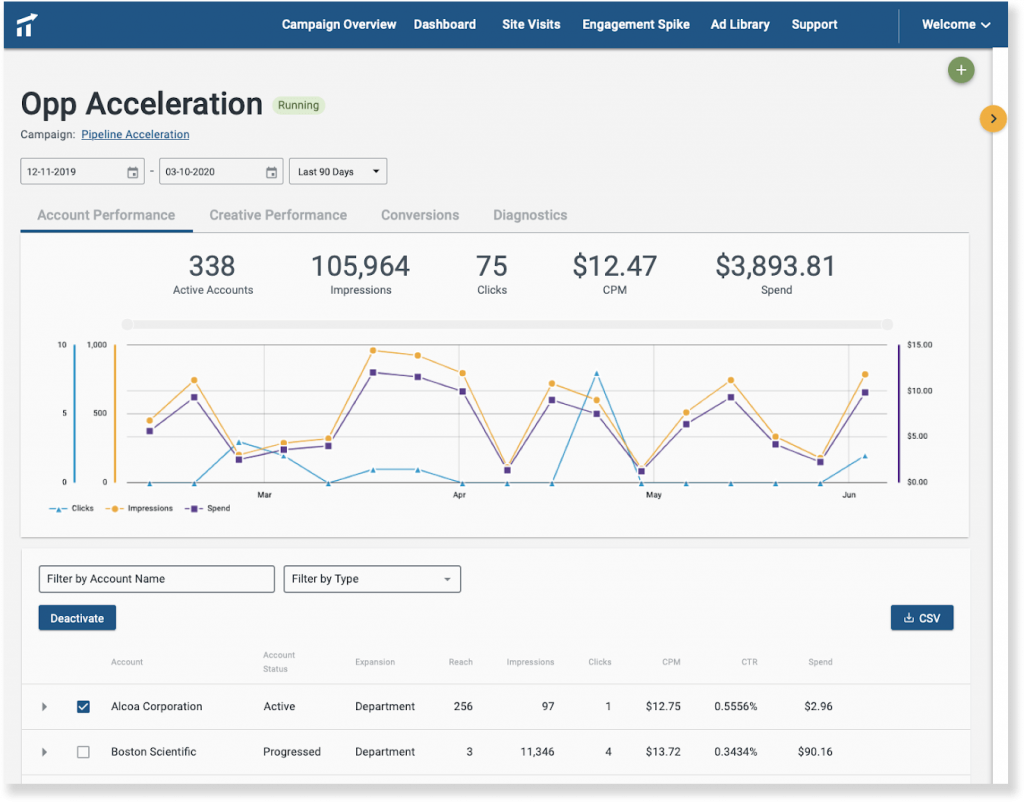
Terminus helps you reach accounts that are showing interest, based on intent (powered by its Bombora partnership), website engagement, relationship score, title, and lookalike audiences. Also, audience segments are not static (unless you want them to) and are updated every 24 hrs depending on the account activity.
Terminus lets you show your Display ads on domains that are contextually relevant to your business for a more targeted approach.
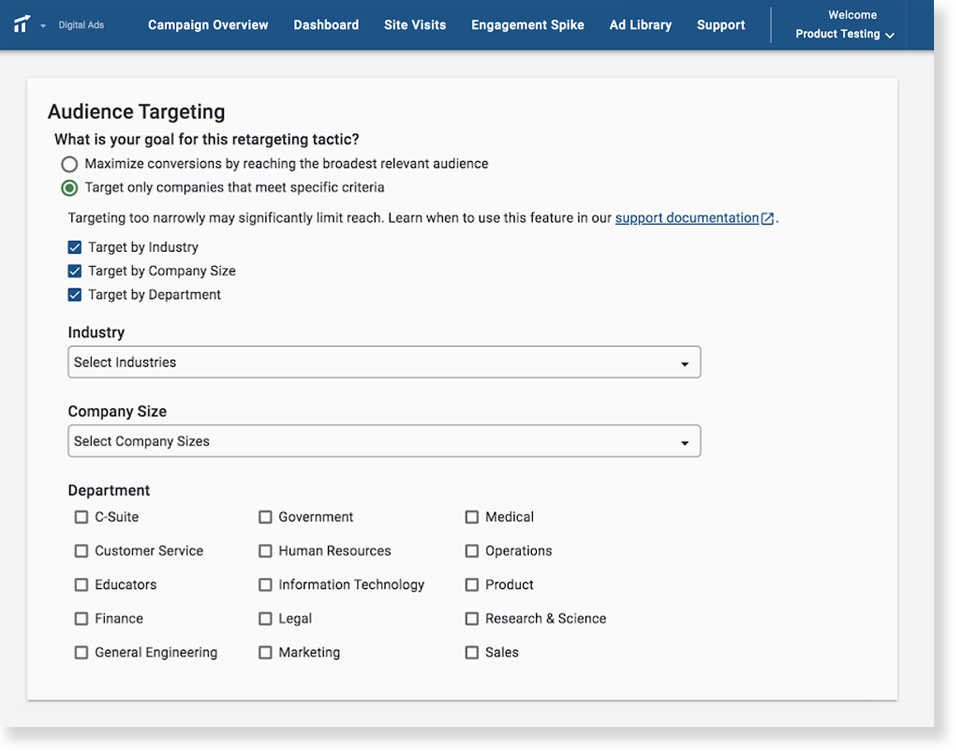
Terminus offers next-generation retargeting fully within the platform – you can retarget individuals from target accounts who visited your site/engaged with ads, all without needing external ad tools.
Terminus addresses website visitor identification with a Visitor ID capability that uses multiple methods to recognise companies that visit your website:
Terminus adapted to the WFH policy after Covid-19 and launched its enhanced IP technology to deanonymize companies even when the employees are working remotely.
When an unknown visitor from a target account lands on the site, Terminus may drop a cookie to remember that device. If that person later engages (for example, fills out a form or clicks an email), the cookie can be tied to an actual contact. Conversely, if a known contact (already in your CRM or marketing automation) clicks through an email or Terminus-powered ad, Terminus can cookie them and then recognise them on future visits. This cookied visitor recognition means that over time, you can identify specific people or at least accounts with much greater accuracy than IP alone.
Terminus integrates with CRM and MAP data, so it can utilise known contact information to assist identification.
For example, if a known lead from Salesforce or HubSpot visits the site (perhaps after clicking an email newsletter), Terminus knows their email domain and can confidently attribute that visit to the person’s account. This matching enriches the anonymous visitor data – instead of just “someone from Acme Corp visited,” you might learn “Director from Acme Corp, who is in our database, visited the pricing page.”
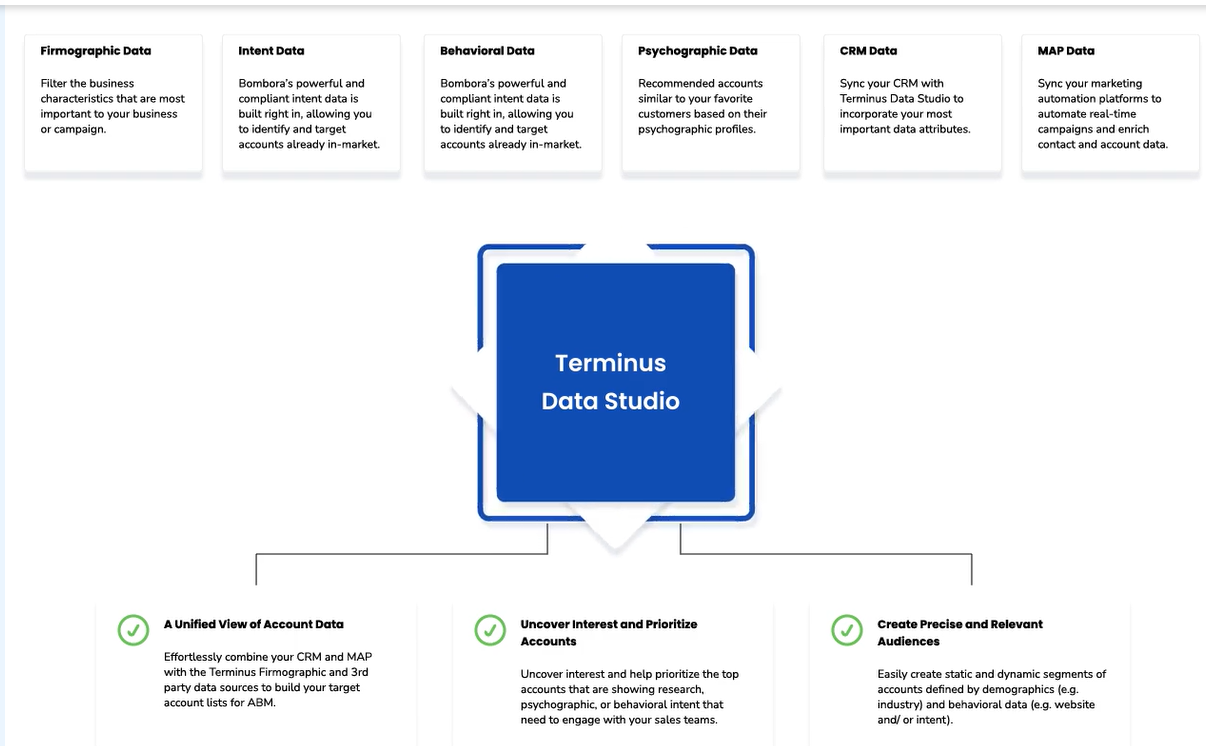
Engagement Hub in Terminus has two modules: Data Studio and Measurement Studio (discussed in the attribution section).
Data Studio further contains the Account Hub that brings all your first-party data and third-party data in one place for ultimate account intelligence, engagement tracking, scoring and audience segmentation (for targeting using ads).

In the Account Hub, you can see:
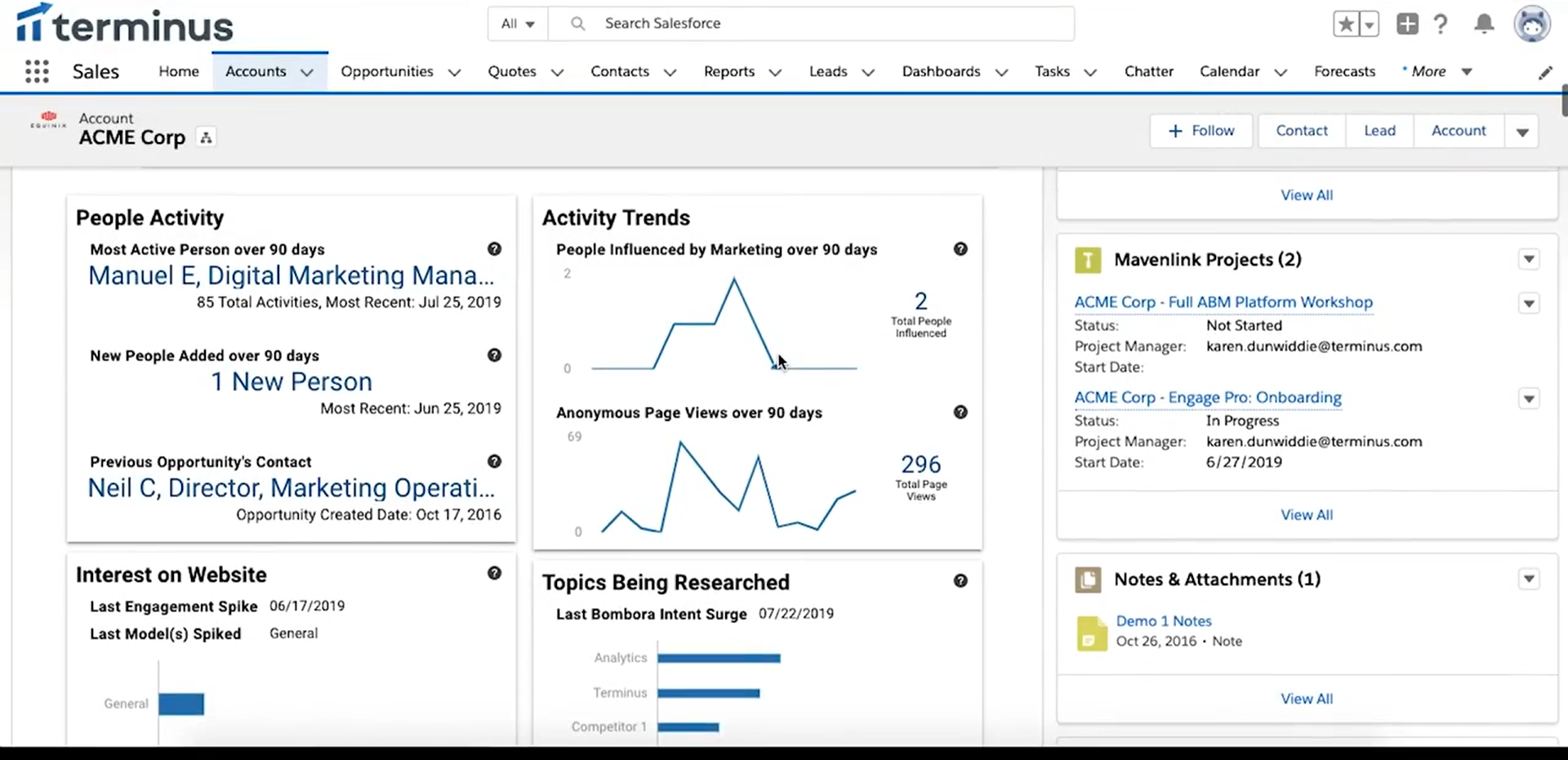
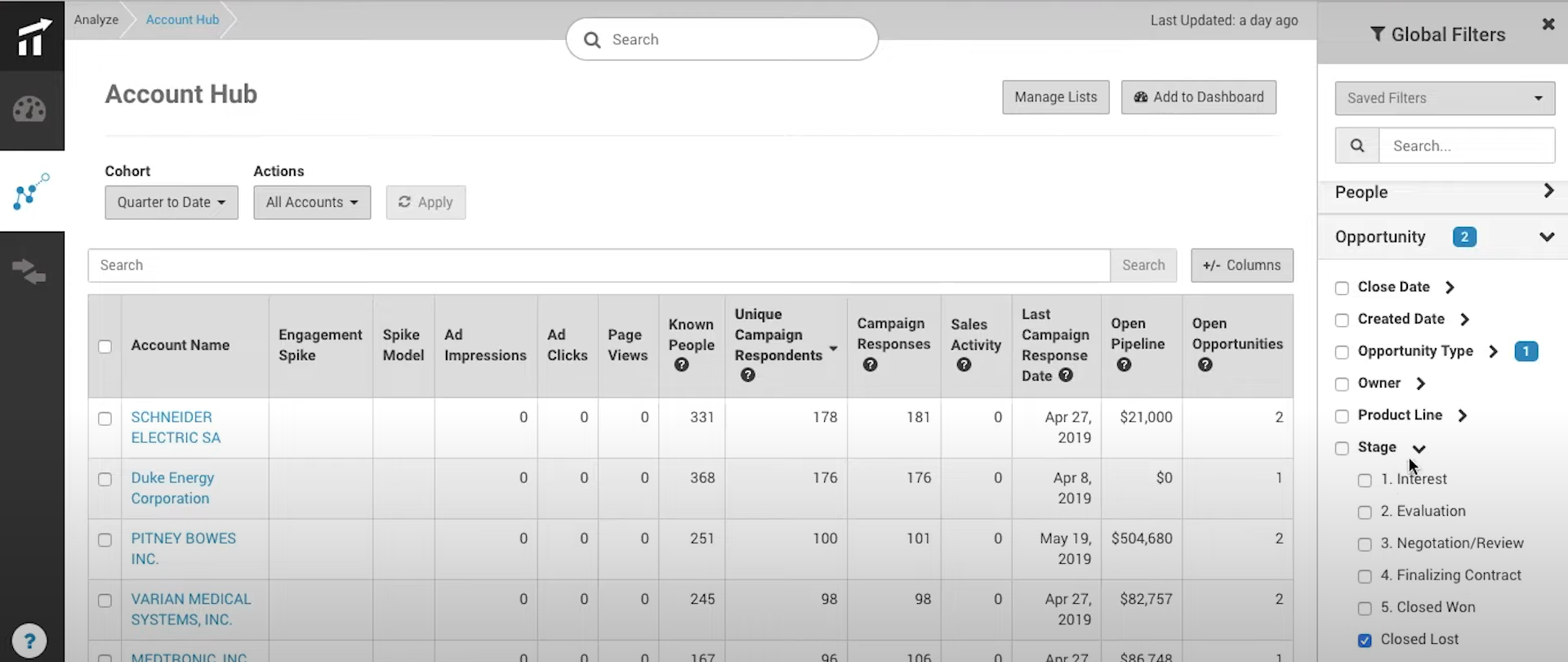
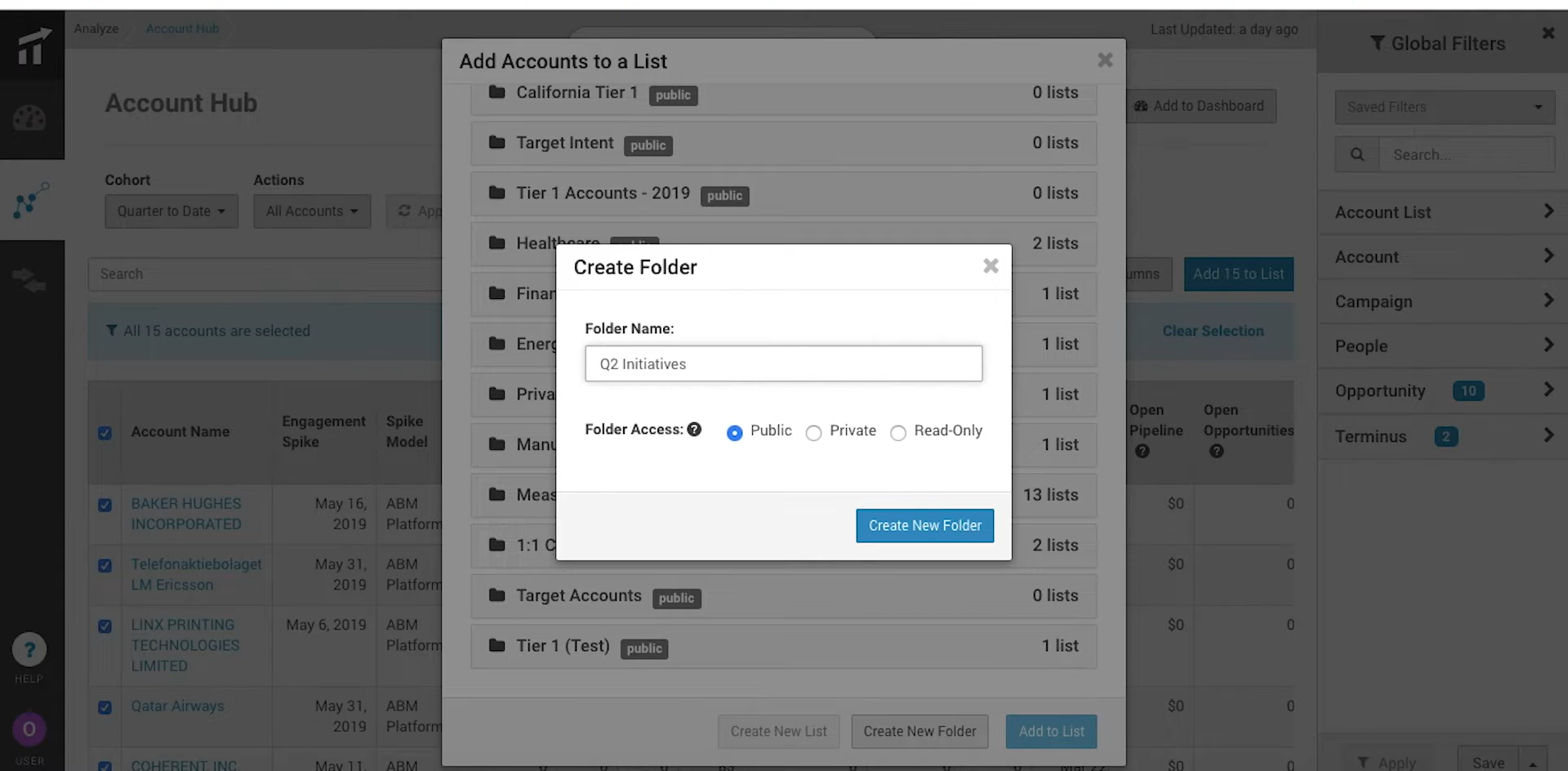
Benefit?
You can see all you want to know about your accounts in one place. You can slice and dice by attributes – e.g., show me all Healthcare industry accounts in California with high intent and high engagement.
This further helps create segmented audiences for ad campaigns, target lost deals that might be engaging with your brand again, or helps your sales and marketing teams know each account’s journey.
Note: After the merger of Terminus with DemandScience, the account enrichment capabilities have been enhanced even more.
Let’s see how Terminus lets you utilise your emails, chats and website for ABM:
You can connect the email signatures of your employees with Terminus, and each business mail from your employees will now go with an ad banner, personalised based on the recipient’s email address (1:1 approach).
So your banner can be contextual to the recipient’s company, department, seniority, buying stage, etc., and you can A/B test ad performance natively.
And of course, putting an ad in email signatures is free. No sweating over CPC and CTR.
With Terminus, you can personalise your website content for specific accounts based on account name, industry, on-site behaviours like exit intent, target accounts list, etc.
For instance, you can make a welcome banner with the account name:
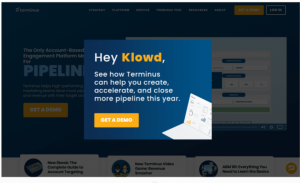
As soon as a visitor lands on your site, you can engage them with your Chatbot. In Terminus, you can build these no-code Chatbots for your site and develop welcome messages, an entire conversation playbook, etc.
Plus, your sales reps can monitor these live chats from the platform:
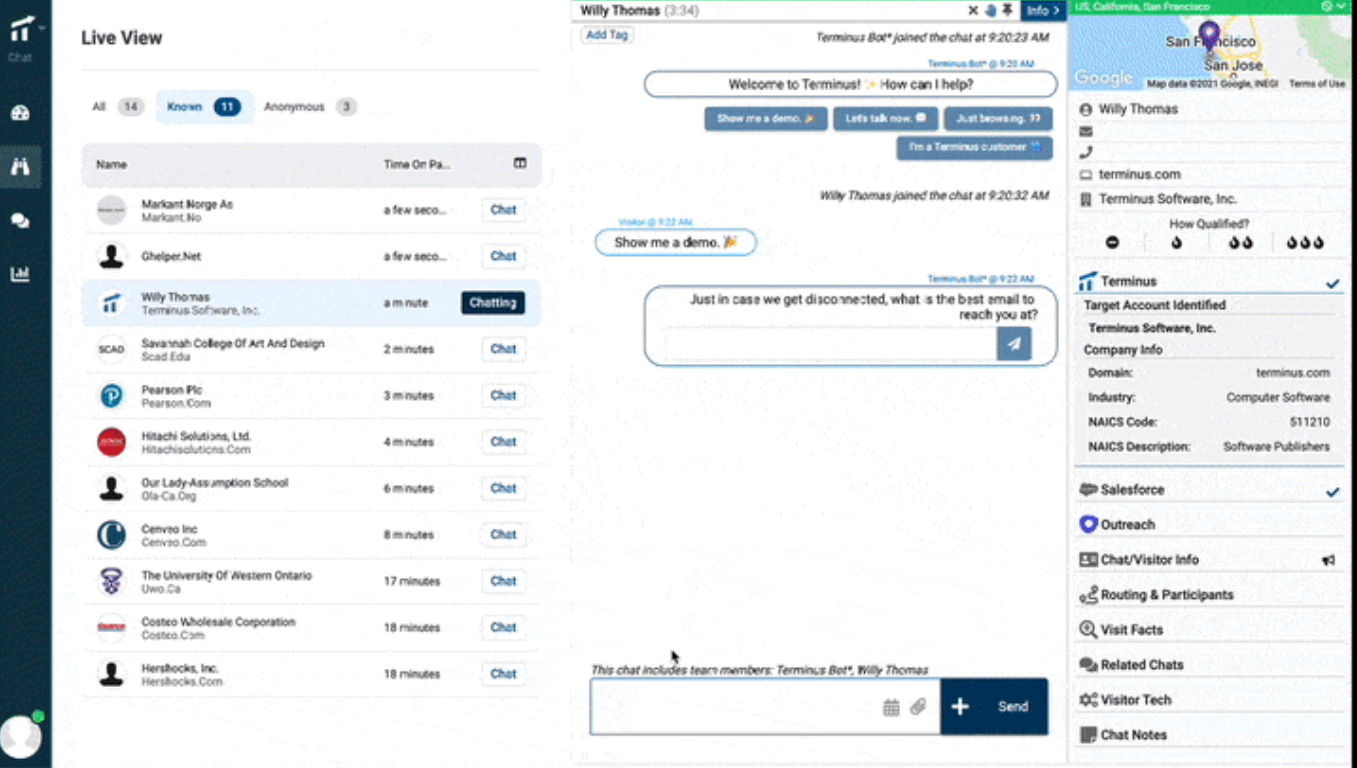
Terminus has a dedicated Measurement Studio (further powered by its acquisition of BrightFunnel in 2018) inside its Engagement Hub for ABM impact measurement and attribution.
Here’s what it offers:
Terminus, we saw, can track engagement across most of your channels, including ads, CRM, website, emails, chats, etc.
Now, this ability, along with the multiple attribution models available in Terminus, lets you track how different marketing touches contribute to an account’s journey.
Out of the box, you can configure first-touch, last-touch, and multi-touch attribution. Multi-touch can be linear (equal weight to all touches) or custom weighted (for example, 40% to first, 40% to last, 20% distributed to middle touches).
Account-Level attribution is the default attribution level in the tool – all engagements and touchpoint data are rolled up to the account as Account Journey:
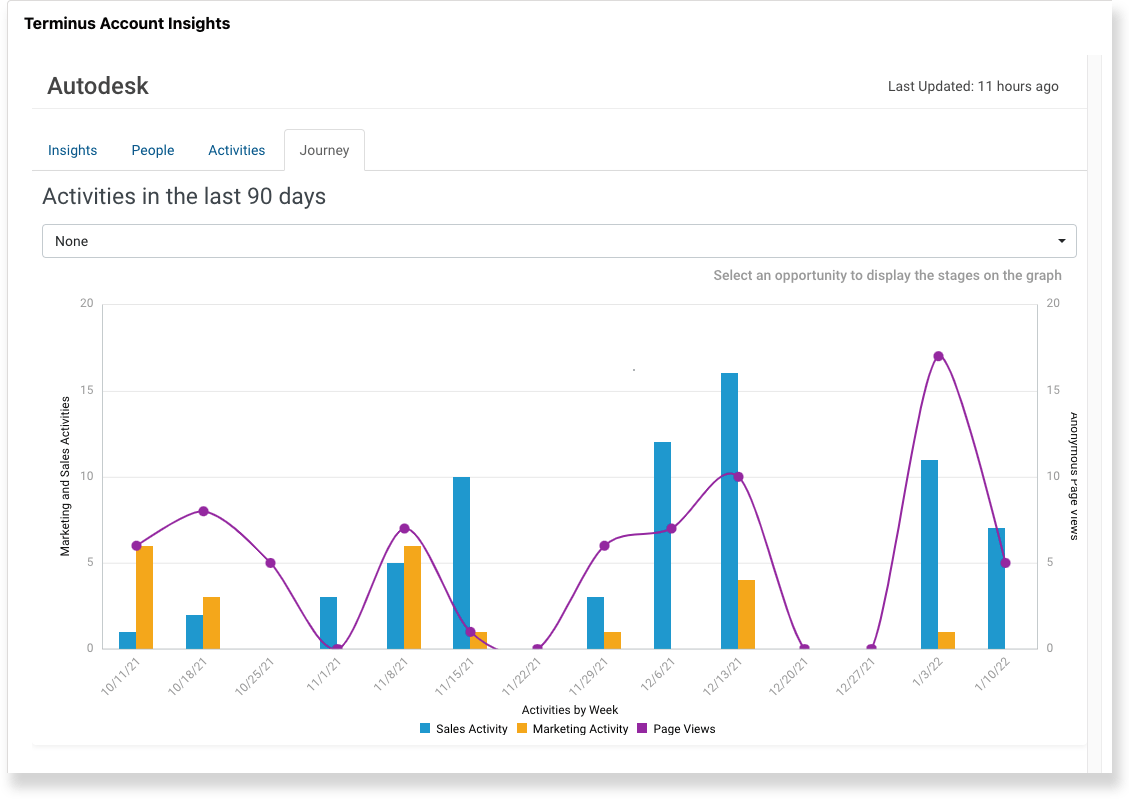
Yes, you can drill down to contact-level attribution too natively in the tool.
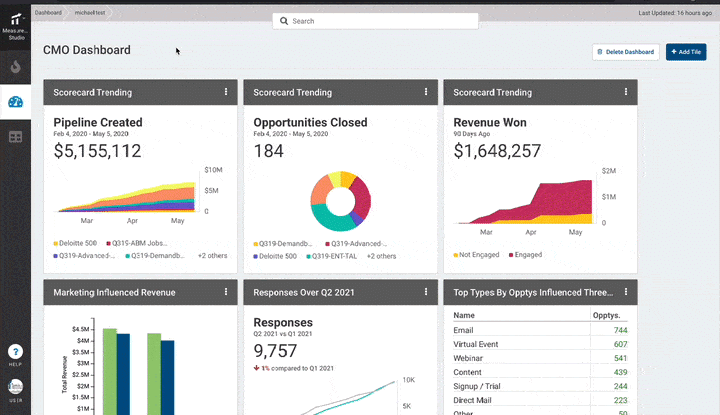
Since Terminus can connect with your CRM and access deals and opportunities, it can natively tie your campaign impact to pipeline and ROI.
The platform allows custom attribution windows (e.g., consider all touches in the 6 months prior to deal close).
Using AI, Terminus can pick patterns to tell you which marketing touchpoint paths yield the best results.
For instance, it can figure out that webinar + retargeting ad is a common, successful sequence.
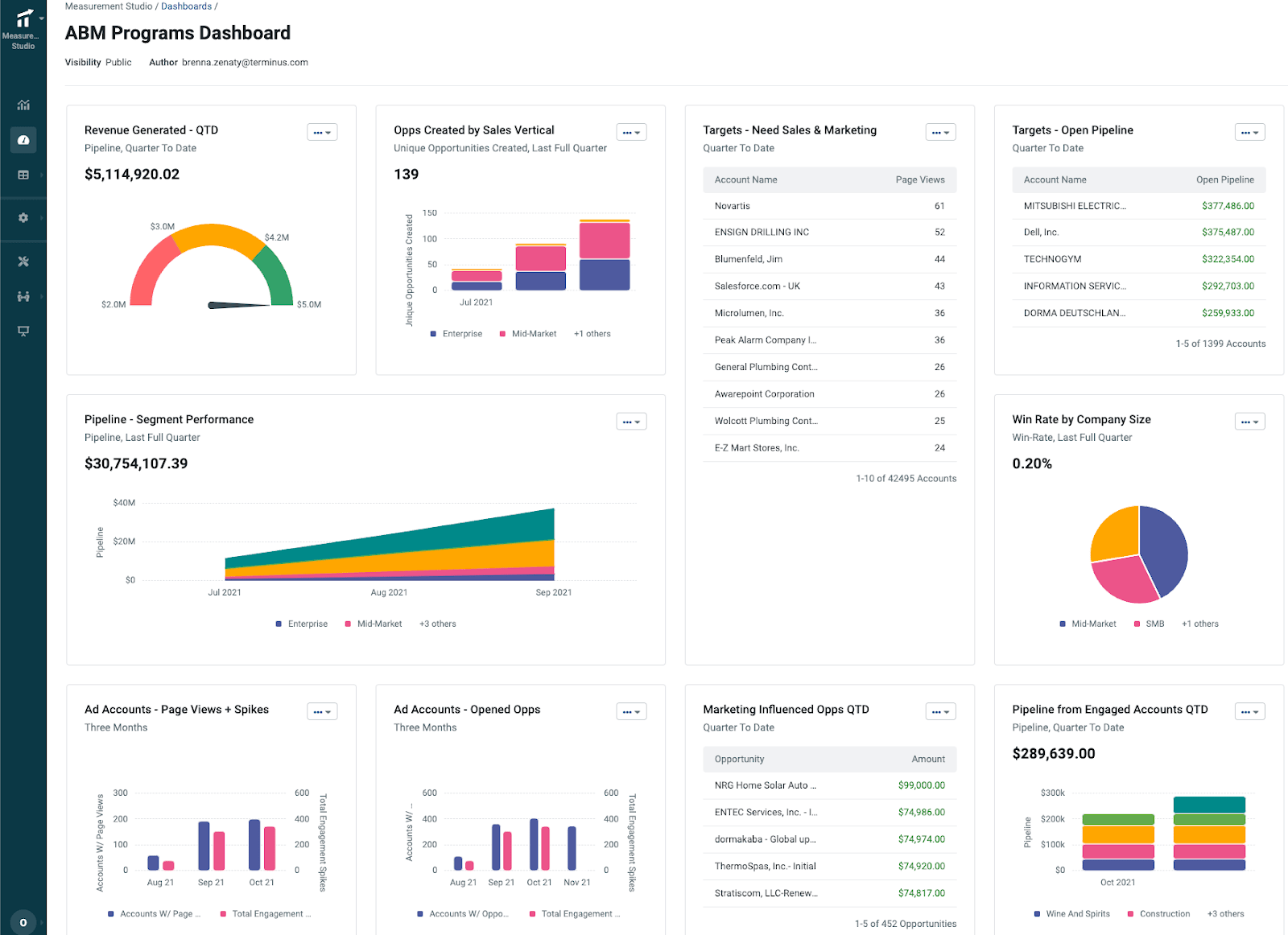
Terminus provides an out-of-the-box ABM program dashboard where you can see the revenue generated, opportunities created, open pipeline, top engaged accounts, accounts that need more marketing and sales efforts, ABM impact on pipeline and similar metrics at a glance.
We did discuss a lot of integration, but they are all over the place, so here’s a compiled list of all official integrations available in Terminus:
| Category | Integration |
|---|---|
| CRM | Salesforce, HubSpot CRM and Microsoft Dynamics 365 |
| Marketing Automation | Marketo, Salesforce Pardot (Account Engagement), HubSpot Marketing Hub and Oracle Eloqua |
| Advertising | Google Ads and LinkedIn Ads |
| Sales Tools | Outeach, Salesloft, Allego, Reachdesk |
| Analytics & Web | Google Analytics, Adobe Analytics, PathFactory and Uberflip |
| Data & Enrichment | Bombora, DemandScience, G2 Buyer Intent, IntentData.io, Crossbeam, Reveal |
| Communication/Alerting | Slack, Gmail and Microsoft Outlook |
You can explore each integration in detail in the Terminus docs.
Being sales-led, they haven’t disclosed the pricing.
But one thing’s certain: The pricing is premium.
You can contact their sales team for a demo and a quote.
Users on platforms like Trustradius, Infotech.com, Software Finder, etc. have praised terminus for its good UX and end-to-end ABM features but have complained about high cost, restricted number of accounts per campaign, limited reporting features, and some integration issues with HubSpot.
Terminus could be the perfect ABM tool for you if:
Terminus might be too expensive and overwhelming if:
If your primary platform for running ABM is LinkedIn, ZenABM might be the most affordable (starts at $59) yet complete alternative for Terminus.
It is purpose-built for LinkedIn ads ABM and has these features:
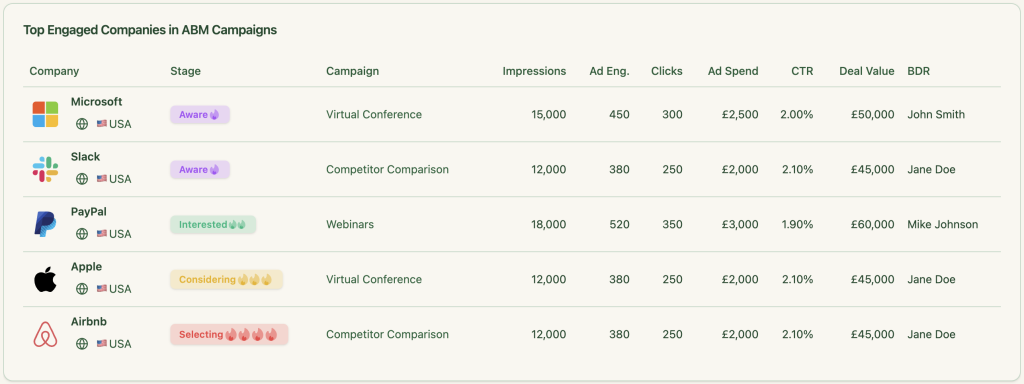
ZenABM pulls company-level first-party data per campaign using LinkedIn’s official API.
This ensures:
ZenABM automatically scores company engagement based on recent LinkedIn interactions, not just historical engagement. It calculates a Current Company Engagement Score within your selected timeframe (e.g., the last week). Hottest accounts are identified instantly, and their ABM Account Stages update in HubSpot automatically.

With ZenABM, your marketing and sales team stay on the same page.
ZenABM assigns your BDRs to accounts in the “interested” stage automatically and pushes this information instantly to your HubSpot CRM:

ZenABM pushes all engagement data into HubSpot (more CRM integrations coming soon) as a single company property (text string). It syncs both quantitative data (e.g., impressions, clicks) and qualitative data (e.g., each company’s engagement metrics with each specific campaign) from LinkedIn Campaign Manager to HubSpot:
These engagement metrics are pushed to HubSpot as company properties like “LinkedIn Ad Engagements – 7 days” and “LinkedIn Ad Clicks – 7 days,” and are updated weekly.
Also, LinkedIn refuses to show engagement data if the interactions per company are less than 3 in a specific time period. Zenabm solves this by aggregating data at the campaign-group level.
This ensures your marketing and sales folks can see each company’s engagement with each specific campaign, without manually updating these details in HubSpot.
If you build different LinkedIn ad campaigns based on user intent/use case, this will help your BDRs reach out to your leads with highly personalised messages.
Say, you sell a product analytics software. Now, if you see a company significantly engaging with your “path analytics” ad and not “session replay” ad, you know what to talk about in your outreach email/message.
Once you have made your campaigns based on different intents, you can label them intent-wise in ZenABM and push intent as company property to HubSpot:
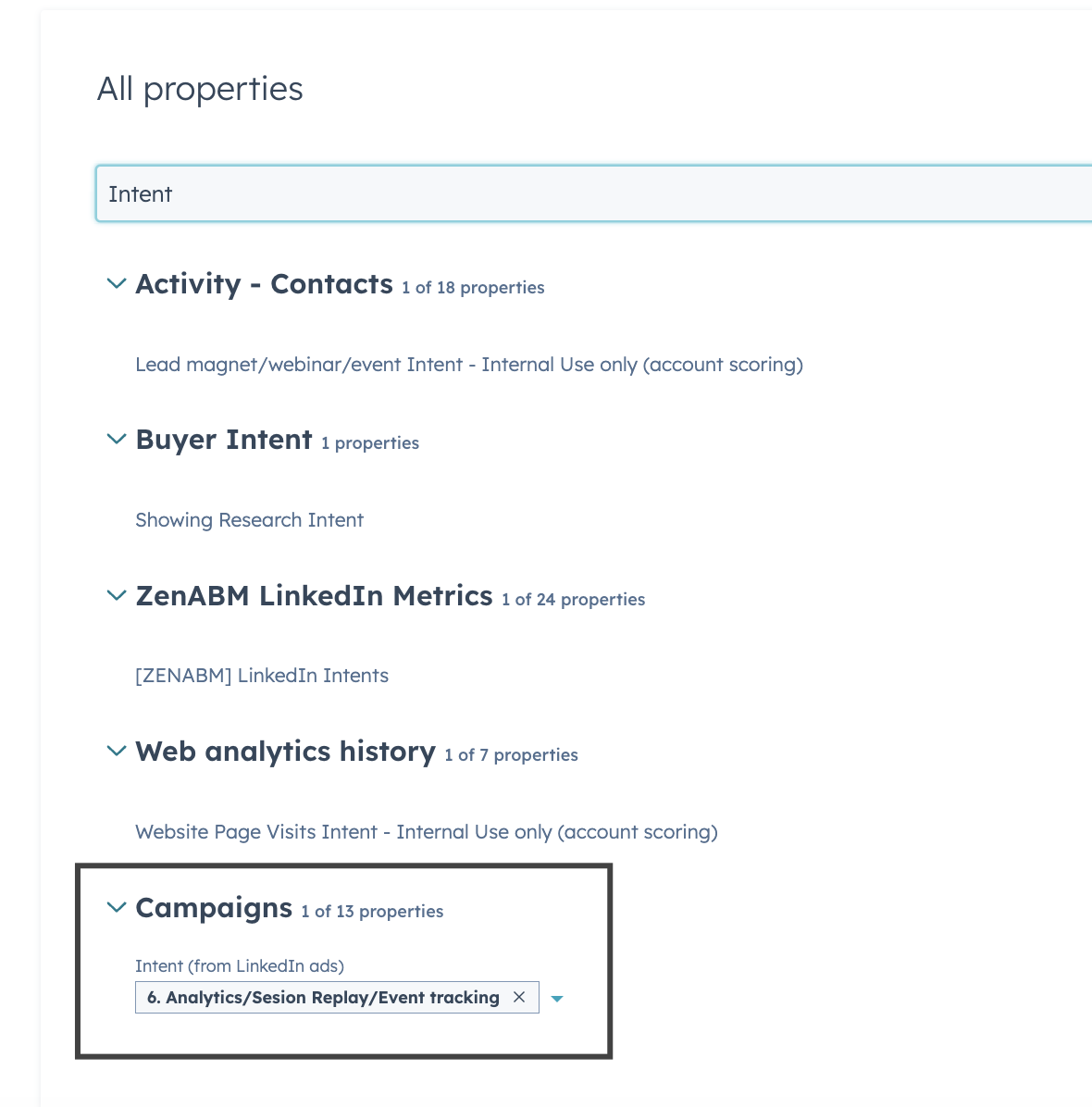
So now your BDR will not only know the company’s engagement level with your ads but also what feature/use-case of the product entices the company!
ZenABM, using its two-way connection between LinkedIn ads and HubSpot, matches the deals in your CRM with the companies that engaged with your ad campaigns.
So, you can see the influence of your LinkedIn campaigns on your sales pipeline and measure the ROI of ad spend.
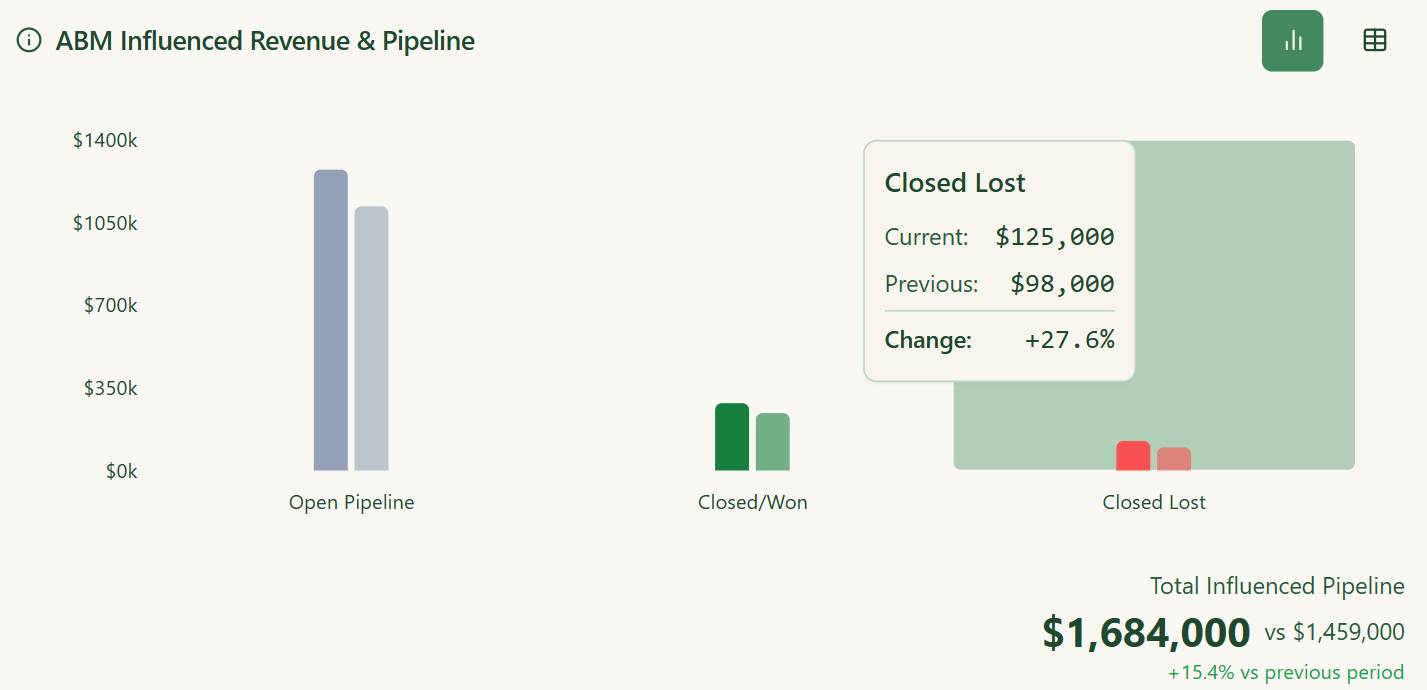
ZenABM hosts comprehensive out-of-the-box account intent & ABM campaign effectiveness analytics dashboards:

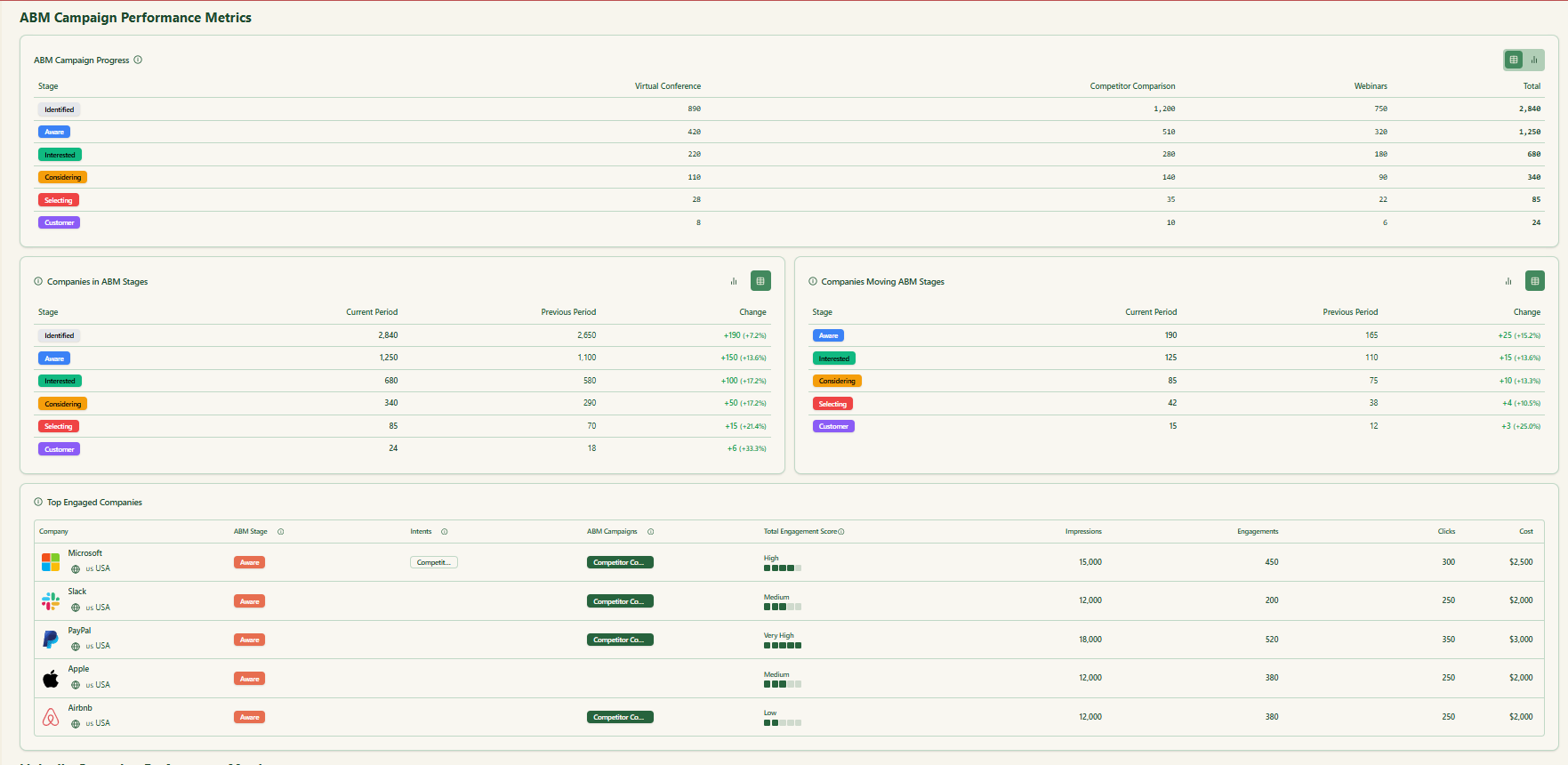

From calculating ROI, Total Revenue, Total Pipeline and ROAS to the Number of companies targeted and their ABM stage, ZenABM does the heavy lifting for you!
As ZenABM lets you see which companies interacted with which exact campaigns/campaign groups, you can retarget them using personalised ads.
Here’s an example of how you can go about it:
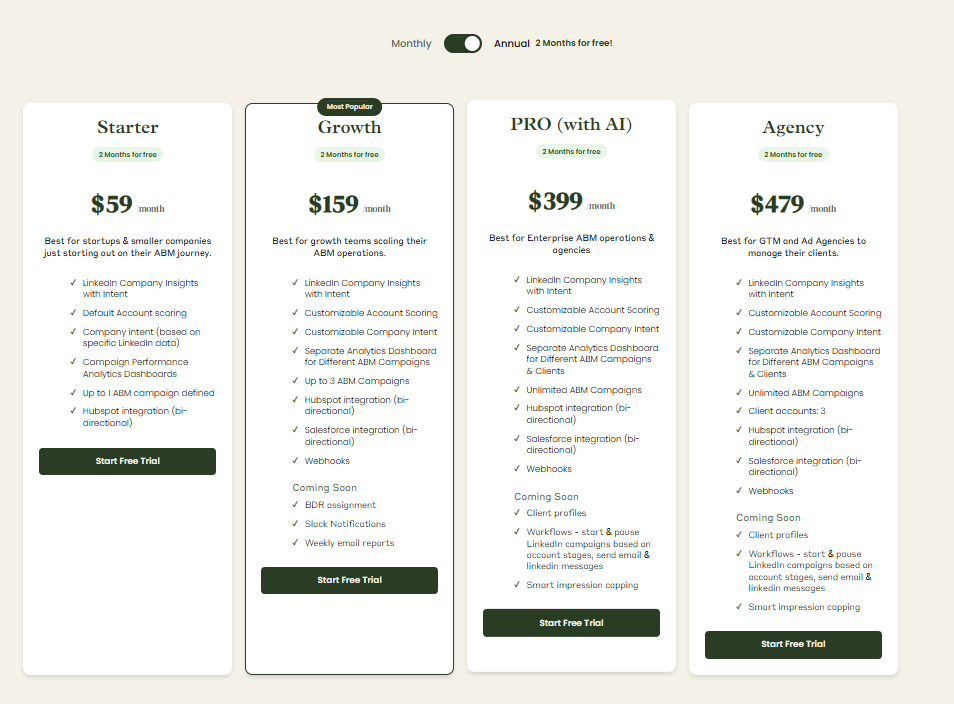
Plans start at $59/month for Starter, $159/month for Growth, $399/month for the Pro (AI) tier, and $479/month for the agency tier.
All plans cover essential LinkedIn ABM functions, with higher tiers mostly expanding limits or adding Salesforce integration.
Pricing is flexible (monthly or annual with two months free), and a 37-day free trial allows teams to try before buying.
Terminus is a powerhouse for B2B teams serious about ABM. From ad tracking and account intelligence to deep segmentation and attribution, it offers an impressive stack, especially if you want multi-channel visibility and deep integrations.
But not everyone needs/uses so many features.
If your ABM focus is squarely on LinkedIn ads, and you care more about company-level engagement, pipeline attribution, and native CRM sync than juggling a dozen channels and tactics, ZenABM might be all you need, at a fraction of the cost.
Explore ZenABM – purpose-built for LinkedIn ABM.